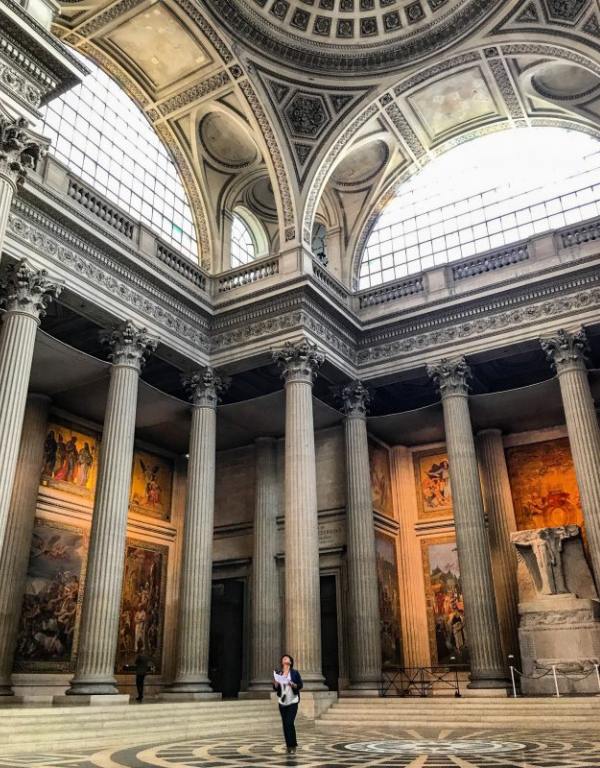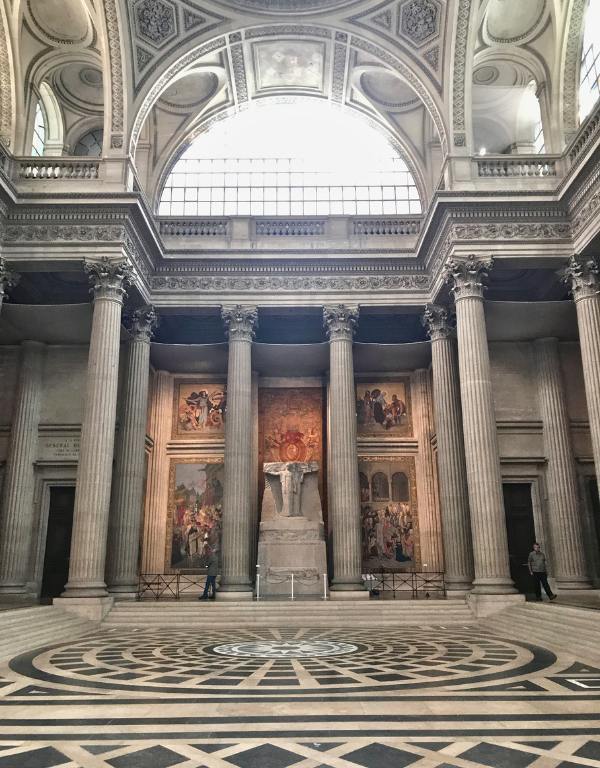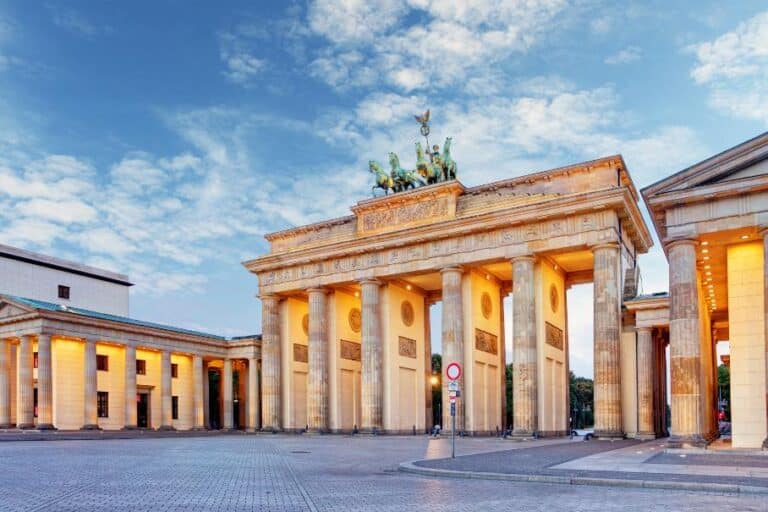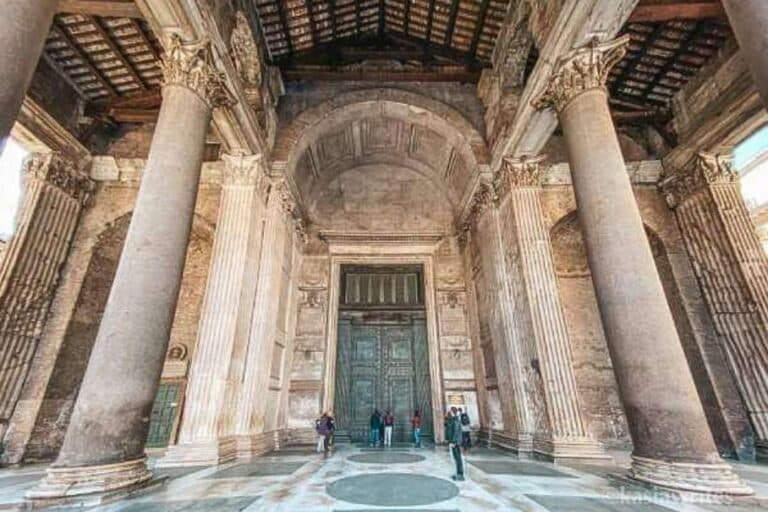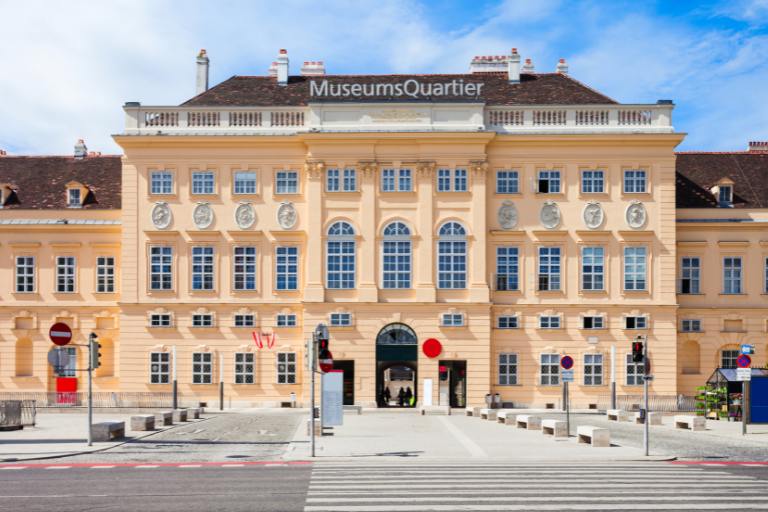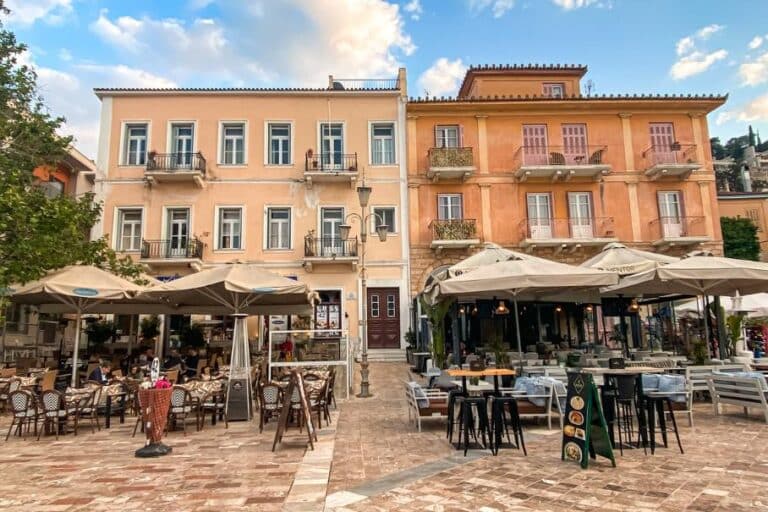Pantheon in Paris Essential Stop on Any Paris Trip
Paris is a city for all kinds of lovers. If you’re looking for romance, culinary adventures, history, culture, and a shopping spree, the City of Lights has it all. You could lose or find yourself here, as many others have done before. You can even visit some of them by visiting the Pantheon museum, the final resting place of France’s cultural heroes.
The Pantheon in Paris wasn’t always a museum. It has played many roles over the years, and today, it’s one of Paris’ top attractions. A combination of neoclassical architecture and stunning Paris views, the Pantheon Museum should be on your to-do list. Here is what you to know about it.
History of the Pantheon in Paris
The Pantheon stands on the site of a 6th-century church dedicated to St. Genevieve, the patron saint of Paris. King Clovis built the original church to honour Saint Geneviève, who was buried here in 512 AD. Over the centuries, several churches replaced it until the final one was in ruins by the 18th century.
After surviving a serious illness, King Louis XV vowed to rebuild the church. The Pantheon was designed by young architect Jacques-Germain Soufflot and later completed by Jean-Baptiste Rondelet. It was meant to rival Saint Peter’s Basilica in Rome and serve a religious purpose. Construction began in 1758 but faced delays from poor planning and lack of funds.
After it was completed in 1790, the building was quickly repurposed by the Constituent Assembly into a national mausoleum. This change marked a shift from its religious purpose to one driven by civic pride. It became known as the Pantheon, meaning “the place where the gods live.”
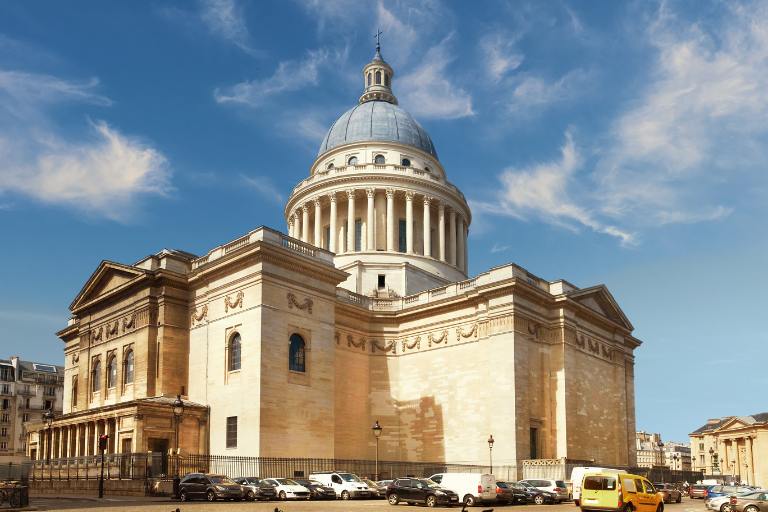
Alternating between being a church and a mausoleum over the years, it symbolizes national memory and secular honour. As one of the most important architectural achievements of its time, the Pantheon in Paris is now a secular mausoleum honouring the great people of France, including cultural heroes and thinkers.
Architecture of the Pantheon in Paris
Although inspired by its namesake in Rome, the Pantheon in Paris deserves its own accolades. Perched on top of Montagne Sainte-Geneviève, in the heart of the Latin Quarter in Paris, it offers historical connection, architectural beauty, and some of the most beautiful views of the city.
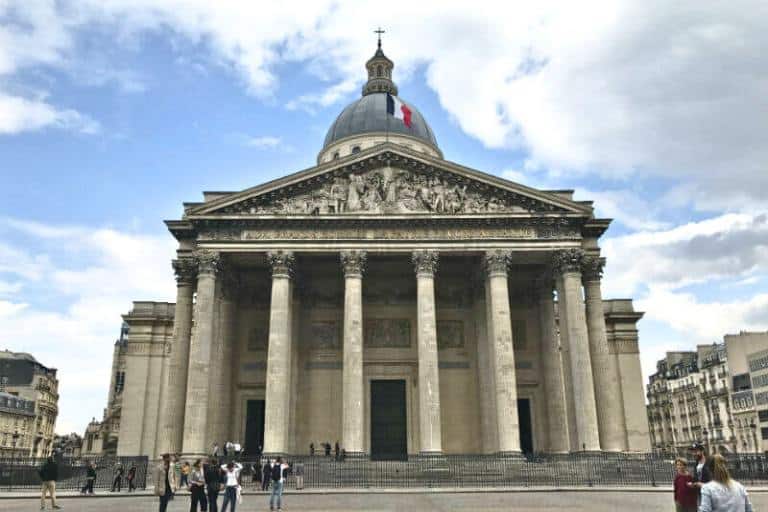
The Pantheon is the first great neoclassical monument in France, and its dome stands proudly over the city, as it has done for centuries. Its facade features a triangular pediment supported by Corinthian columns, echoing the style of ancient Rome.
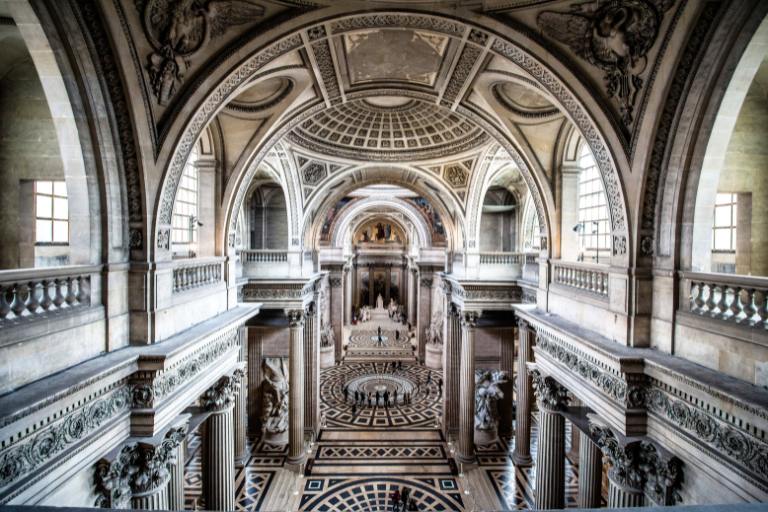
The building, 110 m long and 85 m wide (361 x 279 feet), follows the outline of a massive Greek cross with enormous domes held up by hidden flying buttresses. Corinthian columns line the portico, similar to the style found in the Rome Pantheon. Columns divide the central part of the building, holding up a mural inspired by Greek architecture.
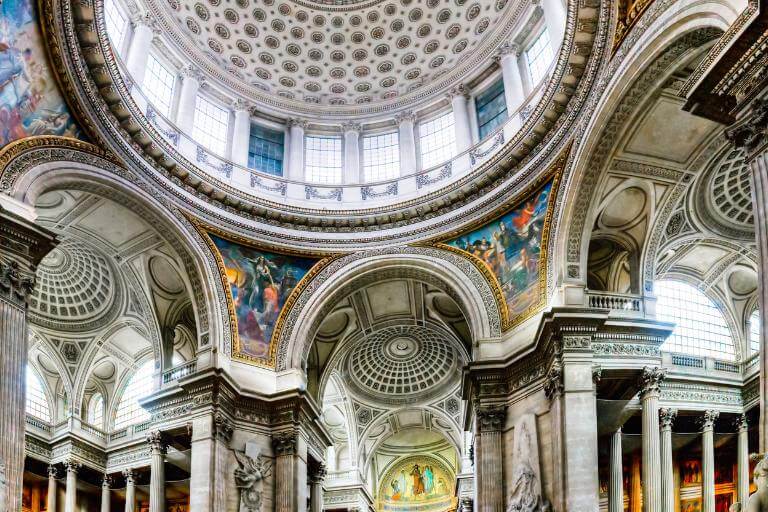
The dome of the Pantheon in Paris, reminiscent of the St. Paul’s Cathedral in London, features three superimposed shells that reach a height of 83 m (279 feet). Climb the 276 steps to the top of the dome for one of the best views of Paris, especially on sunny days.
Visiting the Pantheon museum
Visiting the Pantheon is a humbling experience. The simple yet stunning architectural details are awe-inspiring and get you from the moment you step inside the building. There is an unspoken feeling of being surrounded by greatness while you stand inside.
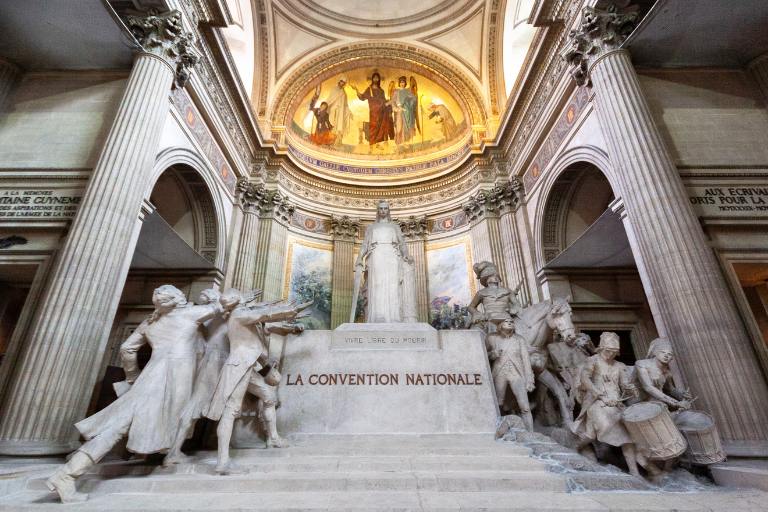
The ground floor is devoid of clutter, which plays up the magnificence of the columns and incredible ceilings. The sheer space of the place makes you feel very small and insignificant. For me, this was the most stunning part of the place. The permanent exhibition explains the history of the Pantheon and its many transformations. There are models of the building, old drawings, and documents that show how it evolved from a church to a national treasure.
Admission is free on the first Sunday of the month, and the Passion Monuments loyalty program offers unlimited access to many other French landmarks. The nearest metro station is Cardinal Lemoine, just a short walk away.
Pantheon crypts
Underneath the Pantheon are crypts with the remains of France’s intellectual visionaries and most honoured citizens. Initially reserved for men, it now includes women who made a lasting impact on the country. Today, there are five women among them.
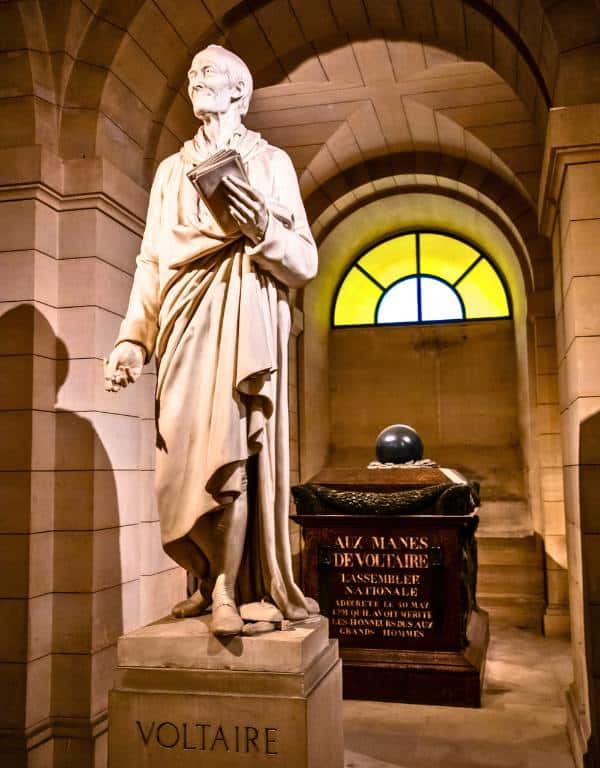
Here, you’ll find the tombs of famous French citizens like Voltaire, Jean-Jacques Rousseau, Victor Hugo, Émile Zola, Alexandre Dumas, Pierre Curie and Marie Skłodoska-Curie, Louis Braille, Jean Moulin, Jean Monnet, Germaine Tillion, Simone Veil, Geneviève de Gaulle-Anthonioz. The Nobel Prize-winning chemist Marie Curie was the first woman buried here.

The crypt is solemn and profoundly moving. You are in the presence of men and women that changed the world. These great minds of writers, poets, politicians and scientists lie stoically in their resting places surrounded by centuries-old walls. People speak in hushed tones, paying respects to these great men and women. It feels like walking through the intellectual heart of the nation.
Foucault pendulum Paris
Inside the Pantheon in Paris is a 67-metre (220-foot) replica of Foucault’s pendulum hanging from the central dome. The original is housed at the Musée des Arts et Métiers, but even this replica is spectacular.
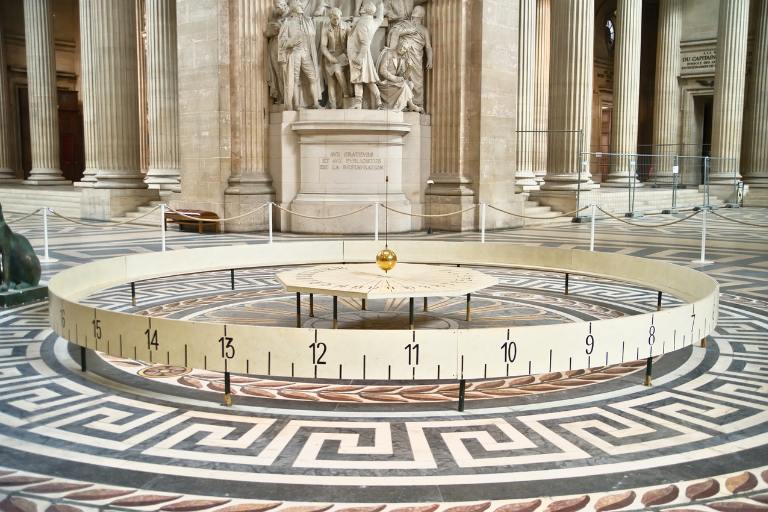
Léon Foucault was a physicist who designed a famous experiment in 1851 to prove that the world spins on an axis instead of staying still. The experiment occurred inside the Pantheon at the request of Napoleon Bonaparte, and it’s hard to imagine it anywhere else.
Hours of operation
The last admission to the Pantheon in Paris is approximately 45 minutes before closing time.
| January 2 – March 31 | 10:00 a.m. – 6:00 p.m. | Open every day |
| April 1 – September 30 | 10:00 a.m. – 6:30 p.m. | Open every day |
| October 1 – December 31 | 10:00 a.m. – 6:00 p.m. | Open every day |
The Pantheon is closed on January 1, May 1, December 25 and the morning of June 17.
Address
Address: Place du Pantheon, 5e, 75005 Paris
Phone: +33 (0) 1-44-32-18-00
Fax: +33 (0) 1 44 07 32 33
Metro Line 10: Cardinal Lemoine
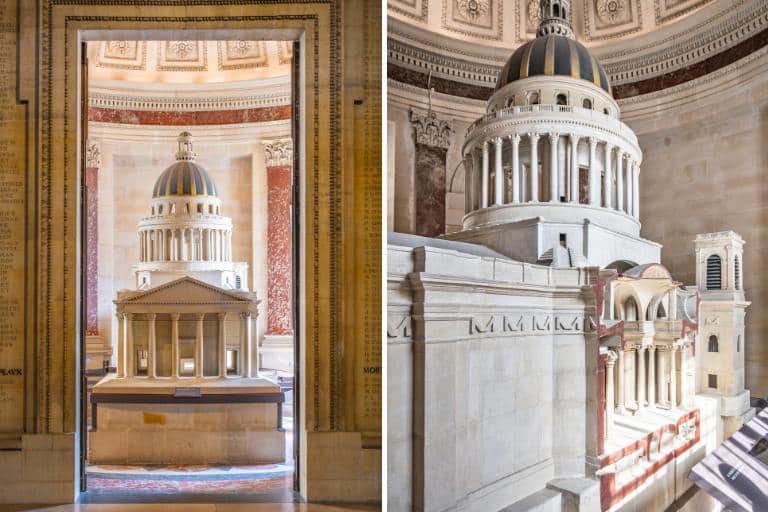
Admission
| Ticket Type | Price (EUR) |
|---|---|
| Adult (26+) | €11 |
| Youth (18–25, non-EU) | €9 |
| EU residents (under 26) | Free |
| Children (under 18) | Free |
| Top of the Dome access (add-on) | +€3 |
| First Sunday of the Month (Nov–Mar) | Free |
| Passion Monuments Pass (1 year) | From €45 |
For up-to-date information, visit Pantheon’s official website.
Final thoughts on the Pantheon in Paris
By visiting the Pantheon in Paris, you are looking inside the cultural heart of France. It’s a great way to spend some time discovering the glory of the past. Besides, you’ll love the architecture and history that make this one of the most important monuments in the city.
Whether you’re a history buff, architecture fan, or cultural traveller, the Pantheon offers a powerful and unforgettable experience. It truly is a national treasure in the heart of the Latin Quarter in Paris.


